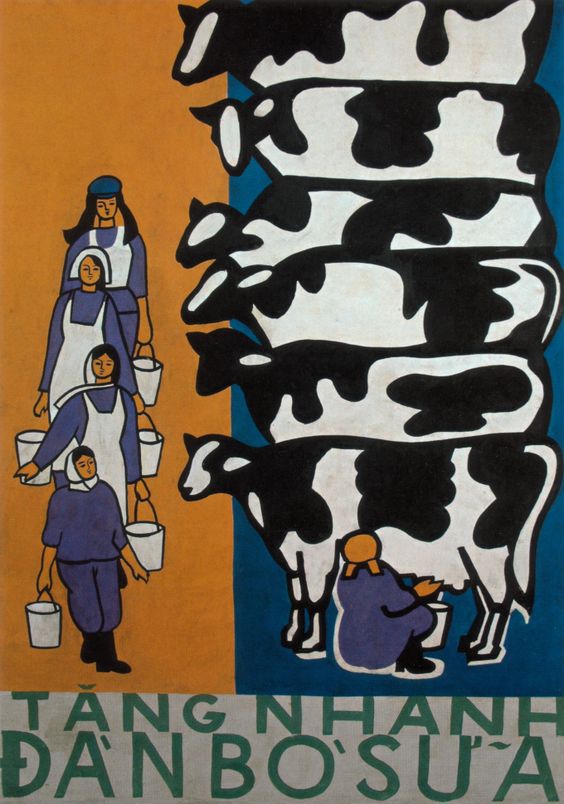
‘Breed More Dairy Cows’ poster from Vietnam.
‘New findings suggest that more intensive agriculture might be the “least bad” option for feeding the world while saving its species—provided use of such “land-efficient” systems prevents further conversion of wilderness to farmland.
Our results suggest that high-yield farming could be harnessed to meet the growing demand for food without destroying more of the natural world.
Agriculture that appears to be more eco-friendly but uses more land may actually have greater environmental costs per unit of food than “high-yield” farming that uses less land, a new study has found.
‘There is mounting evidence that the best way to meet rising food demand while conserving biodiversity is to wring as much food as sustainably possible from the land we do farm, so that more natural habitats can be “spared the plough”.
‘However, this involves intensive farming techniques thought to create disproportionate levels of pollution, water scarcity and soil erosion. Now, a study published today in the journal Nature Sustainability shows this is not necessarily the case.



